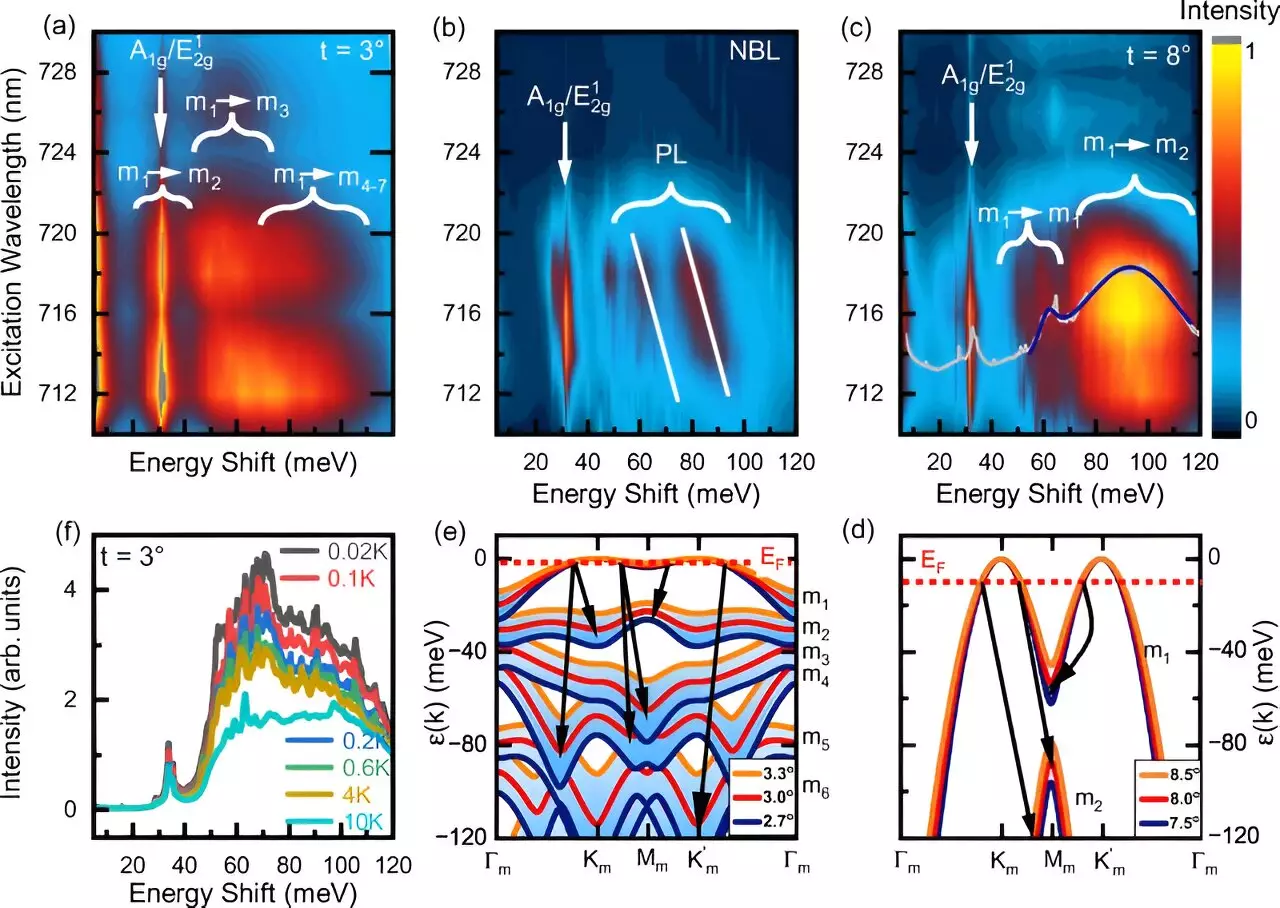The concept of two-dimensional materials has sparked a wave of interest among scientists due to their unique properties that differ from their bulk counterparts. A team of researchers led by physicist Prof. Ursula Wurstbauer from the University of Münster delved into the realm of two-dimensional crystals to uncover ways to manipulate their properties. By stacking layers of thin materials and twisting them slightly, the scientists were able to create moiré patterns that influence the energy landscape of the crystals, ultimately leading to a variety of intriguing behaviors.
One of the key elements in controlling the properties of two-dimensional crystals is the interaction between the charge carriers (electrons) and the energy landscape of the material. By inducing moiré patterns through layer stacking and twisting, the researchers were able to slow down the movement of electrons and promote intensive interactions between them. This phenomenon, known as strongly correlated behavior, results in complex electronic characteristics that can be influenced by the geometric patterns of the material.
The implications of these findings go beyond fundamental research, as they could pave the way for innovative applications in quantum technology and the development of neuromorphic components and circuits. Prof. Wurstbauer highlights the potential of these material systems to revolutionize various technological fields, showcasing the versatility and adaptability of two-dimensional crystals in creating novel devices and functionalities.
Experimental Work and Theoretical Analyses
In their study, the research team combined experimental techniques with theoretical analyses to gain a comprehensive understanding of the behavior of two-dimensional materials. By utilizing optical spectroscopy methods at cryogenic temperatures, the scientists were able to observe and quantify the collective excitations of charge carriers within different energy landscapes. This interdisciplinary approach allowed them to explore the intricate properties of materials such as graphene, molybdenum diselenide, and tungsten diselenide in depth.
The research conducted by Prof. Ursula Wurstbauer and her team sheds light on the fascinating world of two-dimensional materials and their potential for groundbreaking advancements in various fields. By unraveling the secrets of electron interactions and energy landscapes in these crystals, the scientists have opened up a realm of possibilities for future technological innovations. The intricate dance of electrons within moiré patterns offers a glimpse into the complex nature of material systems, hinting at a future where two-dimensional materials play a pivotal role in shaping the world of nanotechnology and quantum physics.


Leave a Reply